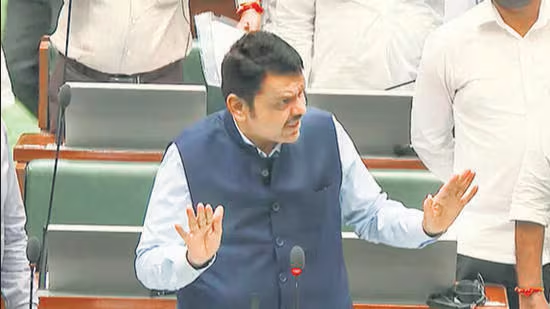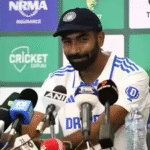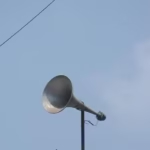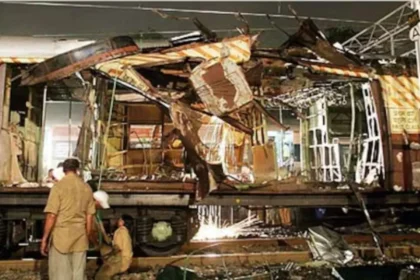MSPSA Faces Fierce Backlash as Critics Vow Court Battles and Street Protests
in a state already teeming with political churn and civic unrest, Maharashtra’s introduction of the Maharashtra Public Security and Protection Act (MSPSA) has struck a raw nerve. Touted by the state government as a vital legislative shield to preserve public order and institutional sanctity, the law is being slammed by civil rights groups, lawyers, journalists, academics, opposition parties, and student unions as draconian. They claim it poses a severe threat to democratic freedoms, including the rights to dissent, protest, and publicly scrutinize political power.
The controversy, though rooted in legislative language, has quickly transcended the boundaries of legal debate. Across campuses, courtrooms, and city streets, citizens and activists have begun to mobilize in what many are already calling Maharashtra’s “second wave of democratic resistance”—evoking historical echoes of the Emergency-era clampdowns. While the government claims the law is needed to curb misinformation and rising threats to public safety, detractors say it gives authorities sweeping, vague powers that could easily be used to target dissent.
The Anatomy of the MSPSA: What Does the Law Say?
At the heart of the debate is the ambiguous but wide-ranging scope of the MSPSA. The law proposes stiff penalties for what it deems to be “acts that endanger public security, state institutions, or promote public disorder.” It grants state agencies the power to detain individuals, shut down digital or physical gatherings, and even restrict content circulation in both physical and digital media.
Critics argue that the language is deliberately opaque, designed to leave vast interpretative discretion in the hands of police officers and bureaucrats. For instance, terms like “threat to public order” and “disruption of institutional harmony” have no clear thresholds for what constitutes criminal behavior. Legal scholars point out that such broad terms make the law ripe for misuse.
While the government insists the act is modeled on existing frameworks in other democratic nations, legal experts highlight that there is minimal judicial oversight baked into the MSPSA. There is no requirement to seek prior court approval before enacting bans or detentions under this law, a feature that some say turns due process on its head.
Judiciary in Focus: Lawyers Sound the Alarm
Within hours of the law being passed, several legal associations—including the Bombay Bar Association and the Maharashtra Legal Rights Forum—issued statements criticizing the legislation. Many believe that the law violates constitutional guarantees, particularly Articles 14 (Right to Equality), 19 (Freedom of Speech and Expression), and 21 (Right to Life and Personal Liberty).
Senior advocate Indira Malhotra, addressing a gathering at Mumbai’s Azad Maidan, called the MSPSA “the most dangerous peacetime law Maharashtra has seen in decades.” Her words were met with thunderous applause. “We will challenge this not just in the Supreme Court, but in the courts of public opinion,” she declared, laying out a multi-pronged legal strategy that involves writ petitions, Public Interest Litigations (PILs), and coordinated advocacy with civil society groups.
Already, over half a dozen petitions are being readied for filing in the Bombay High Court. Several legal aid organizations have also announced helpline numbers and legal support frameworks for any individual detained under the MSPSA’s controversial clauses.
Street Resistance: Protest Movements Take Shape
Even as legal avenues are explored, resistance has begun to swell on the streets. Student groups from TISS, Mumbai University, and Savitribai Phule Pune University have organized teach-ins, panel discussions, and protest marches, describing the law as “an undeclared emergency.” On June 10, a massive rally in Mumbai’s Carter Road drew over 5,000 protestors, many carrying placards that read “Protect Dissent,” “Democracy Not Dictatorship,” and “Repeal MSPSA.”
Artists, writers, and members of the theatre fraternity have joined the movement too. A group of renowned Marathi playwrights issued a joint statement condemning the act, calling it “a tool to silence truth-tellers.” Similar sentiments were echoed in a series of viral Instagram posts by Bollywood actors and independent journalists, further fanning public outrage.
Civil society coalition Hum Bharat Ke Log, which was instrumental during the anti-CAA protests in 2019–20, has reactivated its Maharashtra chapter and announced a “People’s Tribunal” to investigate instances of alleged misuse of the law. These developments underscore a rapidly widening front of opposition, spanning ideologies, professions, and geographies.
Political Polarization: A Deepening Divide
The ruling coalition led by the Maharashtra Chief Minister has defended the legislation vigorously. Speaking in the state assembly, he stated, “The MSPSA is not anti-democratic; it is anti-anarchy.” Government spokespeople argue that the law is necessary to prevent the spread of fake news, digital propaganda, and threats to infrastructure—especially in the current climate of global instability and rising cyberattacks.
However, opposition parties including the Congress, NCP (Sharad Pawar faction), and Uddhav Thackeray’s Shiv Sena have alleged that the law is being introduced to suppress legitimate criticism of the government, especially in an election year. “This is not about national security. This is about political insecurity,” said NCP leader Jitendra Awhad in a fiery press conference.
The bill’s passage, carried out in a late-night legislative session with limited debate, has also drawn criticism for its procedural opacity. Opposition MLAs staged a walkout, accusing the Speaker of railroading the bill through without sufficient floor discussion. The political fallout from this move is expected to shape the contours of Maharashtra’s upcoming assembly polls.
Looking Ahead: The Battle Lines Are Drawn
As the sun sets on Maharashtra’s legislative chambers and rises on the state’s restless streets, one thing is clear: the MSPSA has become a flashpoint. In the coming weeks, the intensity of legal battles and street mobilizations is likely to grow, drawing in national and international attention. Already, several global human rights organizations, including Amnesty International and Human Rights Watch, have flagged the MSPSA in internal briefings and country reports.
In Part 2 of this long-form series, we will explore how student movements across Maharashtra are organizing under decentralized networks, the legal contours of similar laws in other Indian states, and what the MSPSA reveals about the evolving nature of state power in India.
The Youth Uprising: Maharashtra’s Student Movements Mobilize
In the modern history of Indian democracy, student activism has repeatedly emerged as the beating heart of resistance—from the JP Movement of the 1970s to the anti-CAA-NRC protests in 2019. Today, Maharashtra is witnessing a renewed wave of youthful dissent in the face of the Maharashtra Public Security and Protection Act (MSPSA). The law, widely condemned as authoritarian, has catalyzed student bodies into action, transforming university campuses into hubs of political education, mass mobilization, and grassroots organizing.
At Tata Institute of Social Sciences (TISS) in Mumbai, daily assemblies are being held in the main quadrangle where students engage in open mic sessions, legal briefings, and solidarity circles. Hand-drawn posters reading “Reject MSPSA” and “Campus is a Sanctuary of Dissent” line the stone corridors. In Pune, the Savitribai Phule Pune University has become a flashpoint for overnight sit-ins, with students maintaining a 24/7 protest encampment outside the Vice-Chancellor’s office.
Remarkably, these movements are not being led by traditional student unions alone. A new crop of loosely connected, decentralized groups—such as Voices for Constitution, Campus Front of India (Maharashtra unit), and Youth Against Surveillance—are taking charge of mobilization efforts. These organizations rely on encrypted messaging platforms like Signal and Telegram to coordinate across cities, avoiding centralized control that could be vulnerable to surveillance or disruption under the MSPSA.
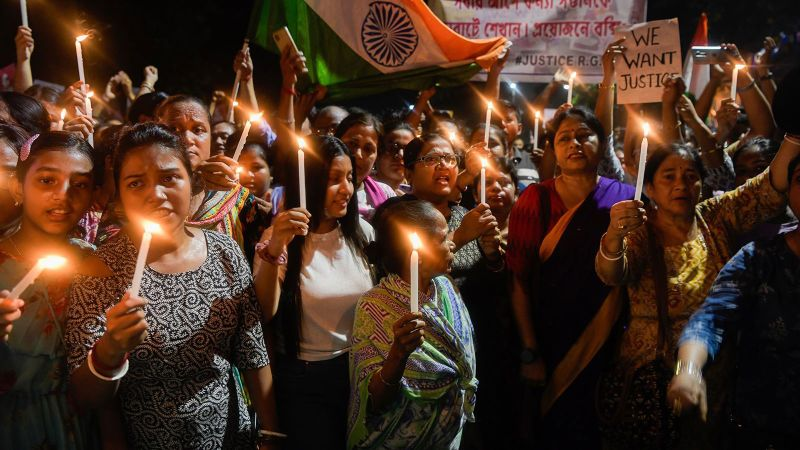
A Digital Generation’s Toolkit: Resistance in the Information Age
The student movement against the MSPSA is not confined to physical campuses. It thrives equally in digital spaces. Hashtags like #ScrapMSPSA, #DemocracyUnderThreat, and #MaharashtraProtests have trended on Indian Twitter for several consecutive days. Instagram pages managed by student collectives routinely post fact-checks, infographics, and daily protest schedules. Meanwhile, digital artists have created politically charged illustrations symbolizing resistance—some of which have gone viral, drawing attention from across the country.
One such illustration, depicting Lady Justice with her eyes uncovered and her mouth taped shut, has become a symbol of the movement. It was created by a 19-year-old fine arts student from JJ School of Art and has since been printed on hundreds of placards seen at protests in Mumbai and Nagpur.
This digitally native form of resistance has forced the government to reckon with a narrative battle it cannot entirely control. Attempts to label the protestors as “misguided” or “politically manipulated” have largely backfired, especially among educated urban youth. Instead, the protests are being increasingly viewed through the lens of a generational demand for accountability, transparency, and constitutional ethics.
MSPSA in Context: Echoes of Previous Legislation
For legal scholars, the MSPSA bears an uncanny resemblance to several other laws in Indian legislative history that have either been repealed or struck down due to constitutional overreach. Comparisons have been drawn with the now-defunct Preventive Detention Act (1950) and provisions of TADA (Terrorist and Disruptive Activities (Prevention) Act) and POTA (Prevention of Terrorism Act)—both of which were condemned for enabling state excesses.
Prominent legal commentator Prof. Arvind Krishnan, who teaches constitutional law at NALSAR University of Law, says the MSPSA is “a Frankensteinian mutation of these older laws, dressed up in the garb of modern public security.” According to Krishnan, the state has made no compelling case for why such extraordinary powers are needed in Maharashtra, especially when existing laws like the Indian Penal Code, the IT Act, and the Unlawful Activities (Prevention) Act (UAPA) already provide a robust framework to counter real threats.
Indeed, the MSPSA’s overlap with existing legislation has been a key argument in many legal drafts currently under preparation for judicial challenge. Lawyers argue that far from filling a gap, the MSPSA duplicates existing powers with diminished accountability, effectively creating legal redundancy designed only to bypass constitutional safeguards.
International Attention: Rights Groups Speak Out
While the MSPSA may be a state-level law, its implications have rippled across borders. Human Rights Watch, in its July policy note, labeled the MSPSA “a threat to India’s democratic ethos.” Amnesty International, while not operating in India currently due to government restrictions, released a detailed explainer on the law’s provisions and possible misuse scenarios.
Additionally, several UN-affiliated organizations monitoring freedom of speech and assembly have taken note. The UN Special Rapporteur on the Promotion and Protection of the Right to Freedom of Opinion and Expression issued a statement urging Indian authorities to “reconsider the adoption of measures that risk stifling fundamental civil liberties under the guise of maintaining public order.”
These developments are significant not just in symbolic terms but for their potential to affect India’s diplomatic image. With India currently holding a seat in the UN Human Rights Council, the MSPSA may complicate its international advocacy on rights-based governance and democratic values.
Press Freedom and the Fourth Estate Under Siege
The MSPSA also threatens to create chilling effects across the media landscape. Independent journalists, particularly those covering political movements, have expressed concern that the law’s broad provisions on “incitement” and “misinformation” could be used to criminalize factual reporting that the state finds inconvenient.
In a joint press conference, digital media outlets including Scroll, The Wire, Alt News, and Newslaundry condemned the legislation and pledged to report on protests despite intimidation. “Our job is not to echo power, but to question it,” said a senior editor from The Wire. Several media professionals have also revealed that unnamed state officials have informally warned them against covering “anti-state elements”—a label worryingly being applied to peaceful protestors and civil society actors.
The Editors Guild of India has demanded an immediate review of the MSPSA, citing it as a “clear and present danger” to journalistic autonomy and press ethics.
A Fragile Moment: The Moral Test for Indian Federalism
Maharashtra has long been considered a bellwether state in Indian politics—a place where urbanization, multiculturalism, and political pluralism collide. The MSPSA is therefore being watched closely not just as a legislative experiment but as a harbinger. If the law withstands legal scrutiny and public resistance here, other states may be tempted to follow suit.
Legal observers warn of a “copycat syndrome” where similarly framed bills may crop up in politically aligned states. Already, there are murmurs from Karnataka and Uttar Pradesh where BJP-led governments are reportedly studying the MSPSA’s framework.
Yet, if resistance triumphs—if the courts strike it down or if political pressure forces a repeal—it could mark a turning point in Indian federalism, reaffirming the role of civil society as a counterbalance to executive overreach.
As Maharashtra braces for weeks, perhaps months, of turbulence, the movement against the MSPSA is beginning to acquire a longer-term vision. From legal clinics and policy briefings to art installations and mass teach-ins, the opposition is creating not just resistance—but a civic renaissance.
The coming weeks will test not only the strength of the law but the stamina of those opposing it. In Part 3 of this long-form series, we will examine the role of lawyers preparing PILs, how opposition political parties plan to leverage the issue during campaign season, and how rural districts in Maharashtra are responding differently than urban centers.
While the Maharashtra government remains adamant in its defense of the Maharashtra Public Security and Protection Act (MSPSA), the legal resistance against the law is expanding with striking coordination and clarity. Multiple senior advocates, constitutional law experts, and civil liberties groups have now aligned to file a series of Public Interest Litigations (PILs), writ petitions, and constitutional references in the Bombay High Court and the Supreme Court.
A key coalition—Constitutional Defenders Forum (CDF)—has consolidated efforts from organizations such as the People’s Union for Civil Liberties (PUCL), Internet Freedom Foundation (IFF), and Lawyers Collective, pooling resources to form a legal task force. According to their initial legal draft reviewed by this publication, the primary argument rests on violations of Articles 14, 19(1)(a), 19(1)(b), and 21 of the Indian Constitution, asserting that the MSPSA curtails free speech, peaceful assembly, and personal liberty without adhering to reasonable restrictions outlined under Article 19(2).
Senior Advocate Vrinda Grover, part of the legal team preparing to challenge the MSPSA before the Bombay High Court, stated in a press interaction, “The law not only fails the test of constitutionality but mocks the idea of proportionality. It criminalizes peaceful protest and undermines the basic rights of every citizen under the veil of security.”
These legal petitions are not merely reactionary; they are being filed with detailed comparative studies of jurisprudence from other democratic nations. The petitions cite global precedents from the European Court of Human Rights, the U.S. Supreme Court, and even Indian case law, such as the landmark Shreya Singhal v. Union of India (2015) that struck down Section 66A of the IT Act, as well as Anuradha Bhasin v. Union of India (2020) on internet shutdowns and free expression.
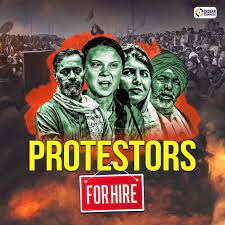
Inside the Courts: How Judges May Interpret the MSPSA
While public opinion and political narratives swirl, the courts will likely focus on technical elements—definitions, proportionality, vagueness, and procedural safeguards. One of the most contentious provisions of the MSPSA is its non-requirement for prior judicial oversight before detentions or content restrictions. Unlike other preventive detention laws that require a review board or judicial review within a specified time, the MSPSA bypasses such checks entirely.
Legal experts point out that the doctrine of “manifest arbitrariness”, developed in Supreme Court jurisprudence post Shayara Bano v. Union of India (2017), may play a crucial role. If petitioners can show that the MSPSA is arbitrary in both objective and implementation, the court may be compelled to strike it down in part or in full.
Further complicating matters, the Maharashtra government has hired a special legal team, including retired judges and top constitutional lawyers, to defend the act. A senior law officer from the Attorney General’s office has reportedly been unofficially consulted, although the act is currently a state matter.
Opposition Strategy: Taking the Fight from the Streets to the Ballot Box
Parallel to courtroom battles, opposition political parties are keen to convert the public backlash into electoral capital. With state assembly elections looming in the coming year, the MSPSA is fast becoming the most polarizing campaign issue in Maharashtra.
The Indian National Congress, Nationalist Congress Party (NCP – Sharad Pawar faction), and Uddhav Thackeray-led Shiv Sena have already conducted joint press briefings, accusing the Eknath Shinde-led state government of pursuing a “dictatorial agenda.” Former Chief Minister Uddhav Thackeray went further, calling the MSPSA “a dress rehearsal for Emergency 2.0.”
A political strategist closely working with the Congress’s Maharashtra unit revealed that the party is preparing a series of local-level campaigns called “Loktantra Ki Pukar” (The Call of Democracy). These will include door-to-door awareness drives, digital campaign toolkits, and public interest ads aimed at informing citizens of their rights under the Constitution and the dangers posed by the MSPSA.
Meanwhile, Sharad Pawar, despite his advanced age, has been unusually active in recent days. At a press conference in Pune, he remarked, “Governments come and go, but laws like these leave behind a scar on the republic. We must repeal it before it becomes precedent.”
Opposition parties have also announced that they will introduce a Private Member’s Bill in the Legislative Council to repeal the MSPSA. Though unlikely to pass, it is intended as a symbolic gesture to keep pressure on the ruling coalition.
The Rural-Urban Divide: Uneven Resistance Across Maharashtra
Interestingly, while urban centers like Mumbai, Pune, and Nagpur have seen vigorous protests and public discourse against the MSPSA, the response in rural Maharashtra has been more muted. Part of this disparity can be attributed to limited access to legal education, fewer civil society organizations, and a media vacuum in remote areas.
In districts like Beed, Jalgaon, and Washim, many villagers remain unaware of the act altogether. Those who have heard of it often confuse it with older laws or assume it relates to anti-terror operations. This knowledge gap is being addressed by grassroots organizations such as Lok Chetna Sangathan and Gram Vidnyan Parishad, which are holding panchayat-level awareness sessions and public dialogues.
In one such session held in Sangli, an activist explained the act using a parable about a farmer accused of inciting unrest simply for criticizing unfair mandi prices—a hypothetical scenario that sparked shock and concern among attendees. Slowly, resistance is spreading into the rural hinterlands, albeit in a less dramatic, more organic manner than in cities.
However, this rural lag in resistance could pose challenges. If the MSPSA begins to be selectively applied in interior districts where legal help is scarce and media oversight is weak, the potential for abuse is considerable. Activists are urging legal aid groups to expand their outreach to these regions before misuse becomes institutionalized.
Academic Institutions: Silenced or Mobilized?
The MSPSA has placed academic institutions under immense pressure. While private colleges and universities have largely avoided taking public stances, fearing administrative backlash, some state-run institutions are openly engaging with the discourse.
Professors at Mumbai University and Savitribai Phule Pune University have issued faculty statements opposing the MSPSA. A group of nearly 300 academicians signed a petition urging the Maharashtra government to repeal the act. They warn that its application could lead to the arrest or harassment of students and researchers working on politically sensitive topics.
At the same time, internal memos leaked from at least two major public universities indicate that administrators have asked departments to avoid organizing public forums or lectures on the MSPSA. These institutional gag orders—informal but effective—signal how academic freedom is quietly being curtailed under the shadow of the act.
A Growing Fault Line in Indian Democracy
The MSPSA has become more than a law—it is a litmus test for the health of Indian democracy in a time of creeping authoritarianism. Its legal destiny remains uncertain, but the social, political, and cultural battles it has ignited show no signs of fading. Whether in the quiet corners of village panchayats or the electric atmosphere of city protests, Maharashtra is engaged in a collective reckoning.
As the resistance to the Maharashtra Public Security and Protection Act (MSPSA) intensifies across legal, political, and academic arenas, a new front has emerged—the world of art, literature, cinema, and performance. From spoken-word poetry slams in Bandra cafés to street theatre in Pune’s Kasba Peth and murals in Nagpur’s college campuses, Maharashtra’s cultural community is turning protest into powerful public expression.
The Marathi theatre circuit, historically known for its bold political storytelling, has begun staging plays directly inspired by the implications of the MSPSA. One such production, titled “Shabdon Ka Shavghat” (The Funeral of Words), recently debuted at the Prithvi Theatre in Mumbai. The play weaves the story of a fictional government silencing poets in the name of public order, subtly but unmistakably referencing the MSPSA. It received a standing ovation on opening night and has since begun a multi-city tour.
Meanwhile, writers and poets have published powerful essays and poems critiquing the law’s overreach. The noted Marathi poet Namdeo Dhasal’s works have been cited by multiple protestors in rallies, recontextualized to express today’s anxieties. Acclaimed novelist Shanta Gokhale wrote in Loksatta that “a nation that handcuffs its artists is a nation preparing for silence.”
On Instagram, young illustrators are producing viral political art opposing the MSPSA. One widely shared graphic shows a masked policeman silencing a child holding the Constitution—both haunting and symbolic. Artist collectives like Artivist Bombay and Canvas for Constitution have launched virtual exhibits exploring themes of censorship, fear, and defiance.
Filmmakers and the Shadow of Censorship
In the wake of the MSPSA’s passage, filmmakers and screenwriters are expressing growing concerns about its long-term impact on cinematic freedom. Although the act does not explicitly target films or media content, its vague definition of what constitutes “public disorder” has alarmed creators working on socio-political subjects.
Independent filmmaker Avinash Arun, whose recent film explored caste violence in rural Maharashtra, said during a panel at the MAMI Festival, “With laws like this looming overhead, our internal censors become stronger than external ones. That’s how self-censorship begins.”
Several projects in development—particularly documentaries and web series dealing with protest movements, Dalit rights, and communal violence—are reportedly being reassessed or re-scripted by producers fearful of state reprisal. Even major OTT platforms have sought legal consultations about potential MSPSA liabilities, particularly around user-generated content and audience commentary sections.
The Film Writers Association (FWA) and the Indian Documentary Producers’ Alliance (IDPA) have issued joint statements demanding legal clarity and artistic protections from the state government. “We are not enemies of the state. We are mirrors to it,” their statement reads.
The Rise of Surveillance: Watching the Watchers
As artists, activists, and ordinary citizens speak out, there are growing concerns that state surveillance under the MSPSA has already begun, albeit unofficially. While the law itself makes no reference to surveillance frameworks, several civil rights organizations have reported an increase in digital monitoring, social media targeting, and physical tracking of protest organizers.
Members of the Internet Freedom Foundation (IFF) and Software Freedom Law Centre (SFLC) have observed unusual spikes in network surveillance traffic during protest planning meetings held online. Student groups have reported that their Instagram pages are being shadow-banned, and encrypted WhatsApp groups are mysteriously losing members or being flagged as “potentially harmful.”
A leaked internal circular from a Mumbai-based college hinted that faculty were being “requested” to submit weekly updates on student political activity. While no direct link to the MSPSA has been proven, many believe these actions form the backbone of a new informal surveillance regime, sanctioned and justified under the broader pretext of “security” that the MSPSA promotes.
Civil society collectives have begun organizing “digital self-defense” workshops, educating citizens on using VPNs, encrypted messaging apps, and privacy tools to guard against unlawful surveillance. The very need for such tools in a constitutional democracy reflects the increasing erosion of trust between the citizen and the state.
Echoes of the Emergency: Historical Parallels and Warnings
The current moment has prompted comparisons to India’s 1975–77 Emergency, when civil liberties were suspended and political dissent was brutally quashed under the Indira Gandhi-led government. Scholars, particularly those specializing in political history and comparative constitutional law, have found disturbing similarities between the legal vocabulary and cultural climate of the Emergency and the MSPSA era.
During the Emergency, laws like the Maintenance of Internal Security Act (MISA) were used to arrest thousands without trial. Then too, poets, journalists, theatre performers, and academics bore the brunt of state action. Today, critics argue, we are witnessing a “soft Emergency” under democratic camouflage.
Veteran journalist Kuldip Nayar, whose memoir on the Emergency remains a cornerstone of political literature, is often quoted by today’s protestors: “The right to dissent is the right to breathe in a democracy.” His words are echoed in placards and pamphlets from Mumbai to Nanded.
Senior historian Ramachandra Guha, in a recent lecture at the India International Centre, remarked, “The MSPSA is not just a law—it is a warning. A signal of how a state reorients its priorities from democratic accountability to political obedience.”
Creative Defiance: A People’s Archive in the Making
Beyond immediate protests and court cases, activists are now working to preserve this moment in history through a “People’s Archive of Resistance.” Similar to efforts during the anti-CAA protests, this digital repository will document protest art, speeches, videos, testimonies, and pamphlets for future generations. Its mission is both preservation and pedagogy—to ensure that the memory of resistance is not lost to revisionist narratives or media silence.
The initiative, being coordinated by a collective of artists, lawyers, and librarians, will be open-source and crowd-funded. It is already collecting zines, independent journalism, voice recordings from protest marches, and letters written by detained activists. It aims to launch a bilingual (Marathi-English) platform by August.
This speaks to a deeper truth: that the movement against the MSPSA is not just reactive—it is also imaginative, constructive, and future-facing. It seeks not only to resist unjust power but to reclaim the public imagination, drawing on art, memory, and community.
Conclusion: Freedom as a Living, Breathing Practice
In the face of a law designed to compress public space, the people of Maharashtra—across professions, castes, faiths, and generations—are reasserting their right to expression in every way possible. From an artist’s paintbrush to a protestor’s placard, from a courtroom’s petition to a poem’s recitation, the message is unified: democracy is not a passive inheritance—it is a daily act of resistance.
In Part 5, we will explore how religious leaders, trade unions, and marginalized communities are responding to the MSPSA, examine early cases where arrests or detentions may have occurred under its vague mandates, and look at what this law signals for Indian federalism and dissent across other states.


